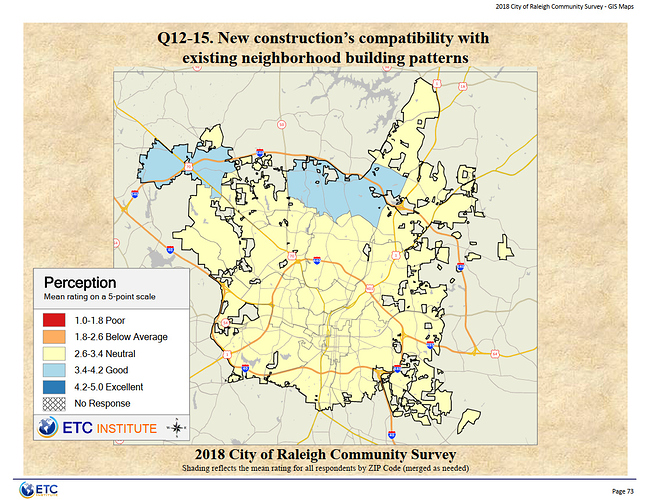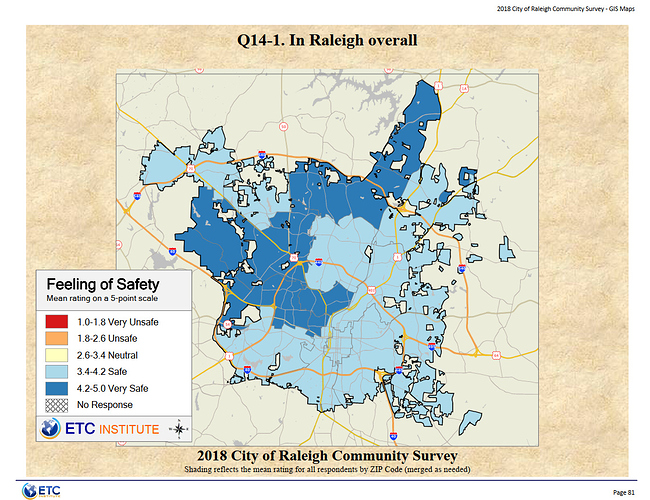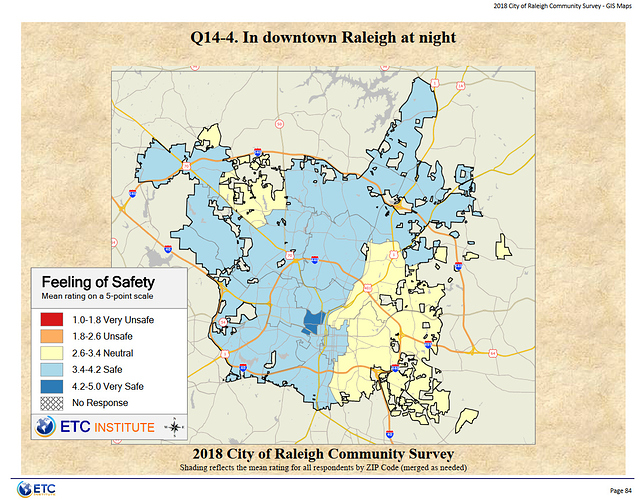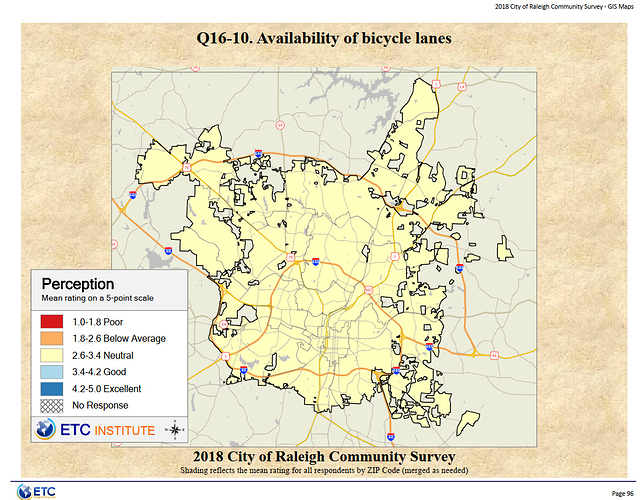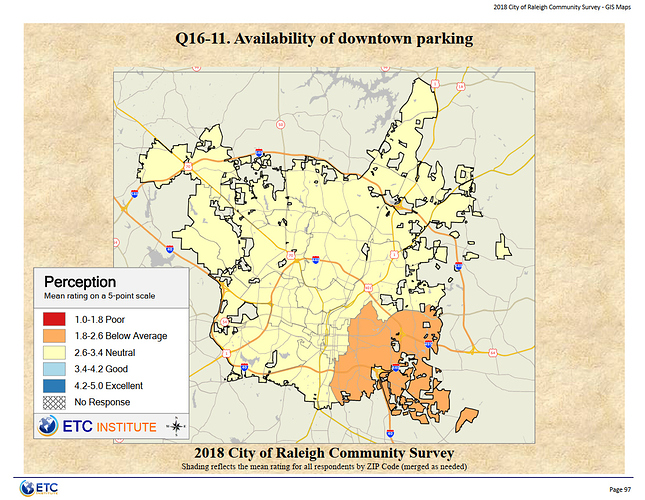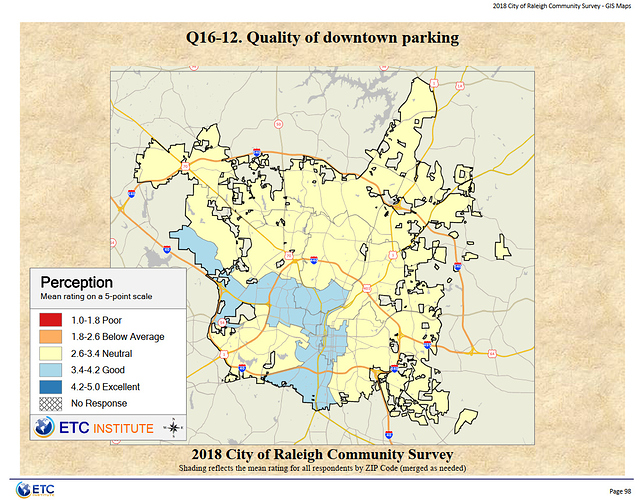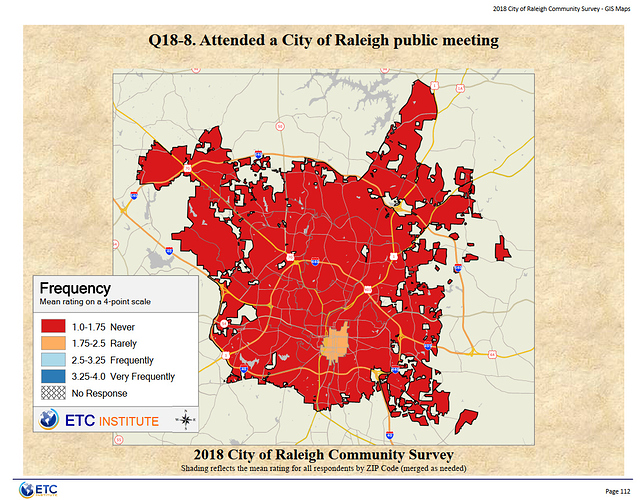I’m kind of paging through the city’s 2018 Community Survey Results and thought that might make a good topic. Let me share some things as I see the to get some conversation going.
I’m not surprised by the last picture but the horrible truth about affordable housing availability is daunting. People seem to brush the issue of affordable housing aside and it’s a shame.
Especially since the areas in yellow keep decreasing every year. The city needs to do a lot more and developers too.
I’m very surprised that the area with the most negative perceptions of downtown Raleigh are the lower income communities of color in the east and southeast. Just something that stood out to me.
If you’re referring to Q12-17, then it’s the “perception” of affordable housing and not a “horrible truth”. Although, there is an argument to be made for and against affordable housing and access to it throughout the city and not just in DTR, imo!
What is considered affordable housings? What income level? How much do the people that live downtown spend on housing from their income? Are they spending 60 percent and are the housing poor? Just wondering, it seems pretty expensive without a dual income?
Does affordable housing have to be downtown, how far out from downtown should or can it be?
Who should it be available for and what is it based on? Income, age, race, legal status, married, single, single parent, sex,?
Has anyone asked the people that would qualify if they really want to live downtown?
How is all this determined? Is it in some city regulations?
Lots of great questions! 
These are excellent questions. I’ll add a few more:
When we say “affordable housing,” are we only referring to subsidized/low-income housing or are we also referring to affordability for a range of incomes encompassing the variety of downtown workers?
Should only certain people be able to live downtown and close to their jobs based on income (ability to afford market rates or qualify for subsidized rates), or should downtown workers of any income level have the option of living near work?
People with lesser means have always been relegated to less desirable areas. People with greater means decide which areas are desirable and the rest follows. But what about how all of this impacts a city’s growth? Can we manage growth and sprawl in a better way by making housing options more accessible for everyone in close proximity to jobs? How does that change the environmental impact of growth?
So many questions!
@RobertSanderlin & @Deb
IMO the problem is that, while we are uncomfortable with the social results of unbridled free market on the most vulnerable in our society, we (meaning the USA) are a culture that resists socialism and tends to view it from its scariest edges and extremes. This often immobilizes us from taking any action and the most vulnerable suffer.
Interestingly with how the city is dealing with Kane, it’s like they are asking the free market to act as a socialism mechanism and play the role that government should play.
Excellent point! I would add this, the US already is creeping into the realm of Socialism. I would love to discuss the topic further, but suffice it to say, you already have an endless list of government involvement including but not limited to the Farm Bill, Social Security, endless support of oil etc. ![]()
I would like a real social safety net, like decent health insurance for everyone, etc. But I also don’t really care about affordable housing downtown. If you’re poor, go live in a less desirable area like the rest of us middle class people do. I guess I’m conflicted. As little as I could ever imagine voting for a Republican, for city council and county commissioner I don’t know that it matters to me.
Sorry for the tangent
…are very much allowed my friend. But maybe I should have moved my opinion and the discussion to the Political discussion page?
My apologies ![]()




